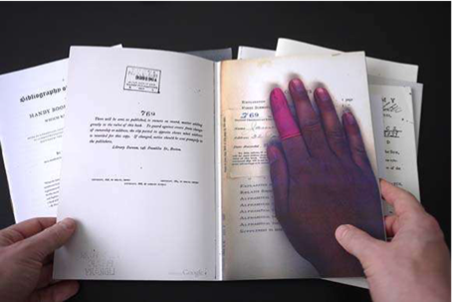Caroline Lebre is a Digitisation Technician at the Imperial War Museum (IWM) Duxford in England. She attended IS&T Archiving 2021 with support from the DPC’s Career Development Fund, which is funded by DPC Supporters.
I have recently started a position as a Digitisation Technician at the Imperial War Museum (IWM) Duxford in England, digitising the still media collection at the demand of the museum’s clients for various projects. As a recent graduate starting my career in the sector, I applied for a DPC Career Development Fund grant to attend the IS&T Archiving 2021 conference to learn about the ongoing research and debates on digitisation and curation and understand the different practices implemented by cultural heritage institutions. However, I was worried that the conference was intended for experts and professionals with several years of experience in the sector and I would not be able to understand the content discussed during the talks. I was very happy to discover that the Technical Papers Program offered a wide range of talks aimed at practitioners from all backgrounds and experience levels and that instructors were always keen on answering all questions. If you are currently involved in your first digitisation project, this conference will be a great platform for you to learn without barriers, just as it was for me.
As part of my DPC Career Development Fund grant, I was able to attend two Short Courses of my choice. I elected SC14 Quality Assurance Workflows for Digitization Projects, as QA is a key part of my role as a digitisation technician, and I wanted to learn about different practices and how they could apply to my organisation. I choose to write my article about this course as it is a great example of how the IS&T Archiving 2021 conference ‘goes back to basics’ to trigger debates about defining key concepts.
This 2-hour course given by Martina Hoffmann made the participants think critically about the definition of quality and how the answer to ‘what is quality?’ significantly changes depending on the nature of the digitisation project it applies to.
It is therefore of primary importance to define quality before planning and establishing QA. Most professionals in charge of a digitisation project will want the highest quality, but the highest quality for a specific project will depend on the size of the project, the material being digitised, the file format and image quality, the funds, whether the project has a fixed deadline or will last several years, how the project is managed and whether external partners are involved, and the usage of the digital files after the end of the project...
It was particularly interesting for me to answer these questions regarding the project on which I am currently working, and this helped me to understand the reasons behind the QA workflow implemented by my organisation. As a technician, I am naturally not part of the decision-making regarding the projects I work on and after attending this course, I realised the importance of sharing these key points about the project, which are decided on a managerial level, with the whole team to enable every team member to see the bigger picture, understand why they digitise and why they follow a specific workflow, and therefore perform better.
Another aspect of the course which I found particularly interesting was how Martina Hoffmann illustrated the importance of quality assurance. Running a QA workflow is certainly expensive and time-consuming and the argument that QA is not needing if the file is ‘readable’ could be received.

See the full text and links at: http://www.newyorker.com/books/page-turner/the-artful-accidents-of-google-books (2013)
This file is certainly ‘readable’ by a software but the human eye undertaking the QA would immediately identity that the content is not ‘readable’ due to the hand of the digitisation technician on the document. This links back to the purpose of a digitisation project: archival material is very often digitised to allow its content to be accessible to a target audience.
On the other hand, relying exclusively on the human eye can drastically reduce the efficiency of the QA, as software packages are capable of analysing an important number of files and check that they all perfectly match the standard established for the project.
I am most grateful to have been the recipient of a DPC Career Development Fund grant to attend the IS&T Archiving 2021 conference as it gave me the opportunity to learn a great deal from renowned professionals and I hope this short article will encourage you to attend next year’s conference and take part in the ongoing discussions in the sector.














































































































































Comments